Let’s start with the mystery.
Back in August last year I spoke of a mystery connected to these two gravestones in the old parish churchyard of St Ann Blackfriars in Church Entry (EC4V 5HB) …
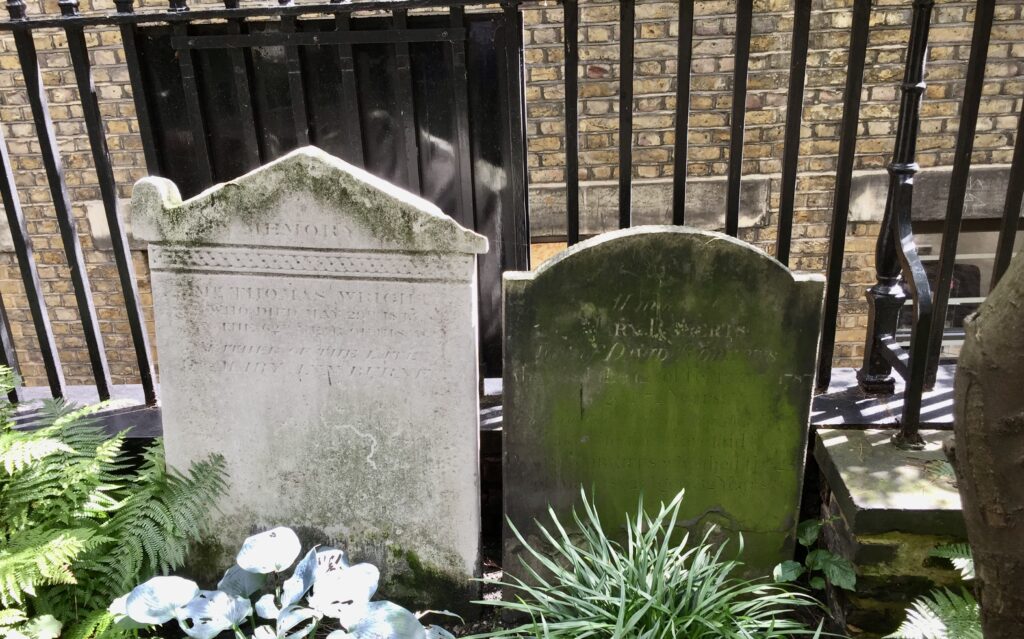
My ‘go to’ source of information when it comes to grave markers is the estimable Percy C. Rushen who published this guide in 1910 when he noticed that memorials were disappearing at a worrying rate due to pollution and redevelopment …
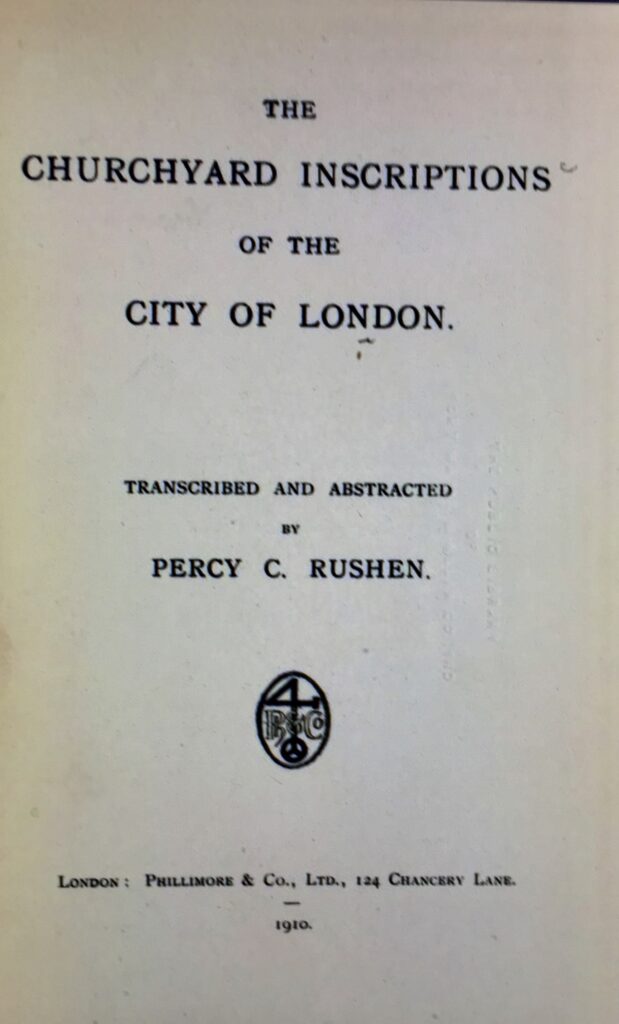
So when I came across the last two stones in this graveyard with difficult to read inscriptions I did what I normally do which is to consult Percy’s book in order to see what the full dedication was.
There was, however, a snag. Neither headstone is recorded in Percy’s list for St Ann Blackfriars. Let’s look at them one by one. This is the stone for Thomas Wright …
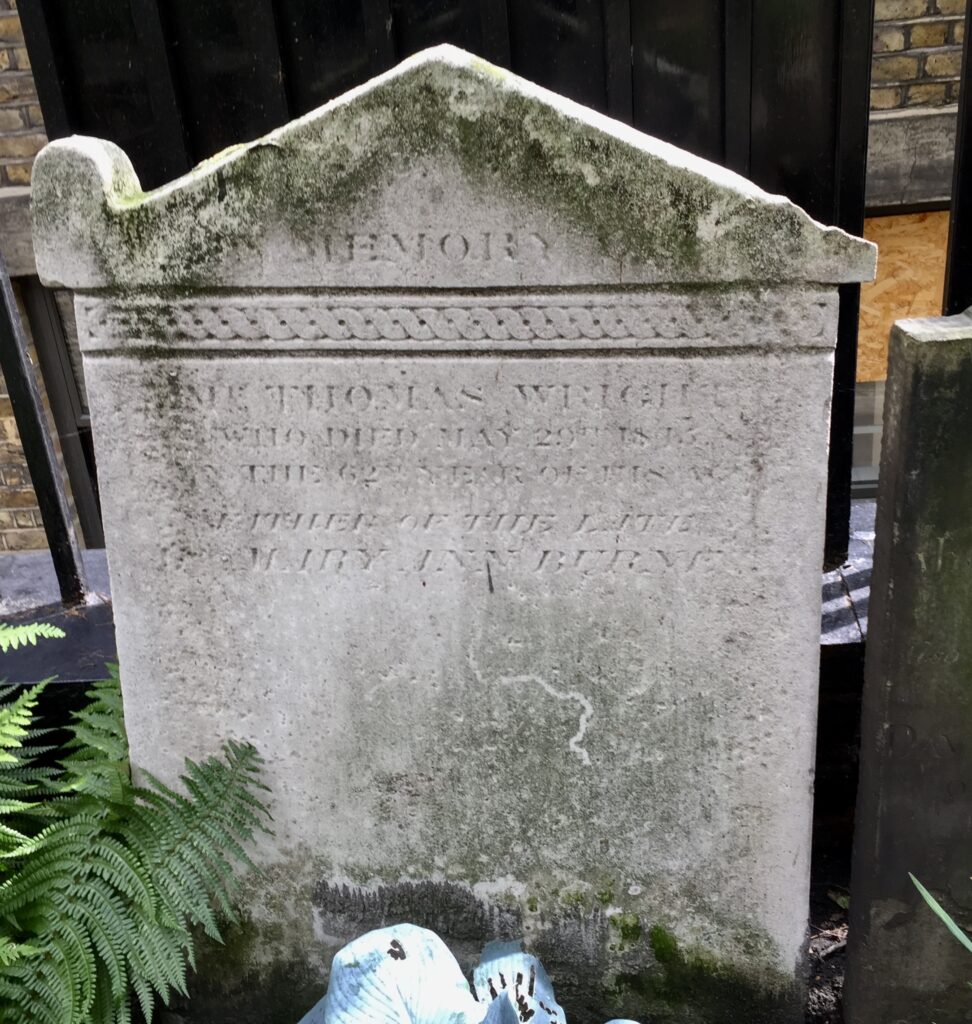
Fortunately, the book lists people in alphabetical order and, although there isn’t a Wright recorded at St Ann’s, there is one recorded at St Peter, Paul’s Wharf. It’s definitely the same one and reads as follows :
THOMAS WRIGHT, died 29 May 1845, father of the late Mrs Mary Ann Burnet.
The inscription of another stone recorded in the same churchyard reads …
CAROLINE, wife of JAMES BURNET , died 26 July 1830, aged 36.
MARY ANN, his second wife, died 12 April1840, aged 36.
JAMES BURNET, above, died … 1842, aged …3
St Peter, Paul’s Wharf, was destroyed in the Great Fire of 1666 and not rebuilt but obviously its churchyard was still there in 1910. And it was still there in the 1950s as this map shows. I have indicated it in the bottom right hand corner with the other pencil showing the location of Church Entry and St Ann’s burial ground …
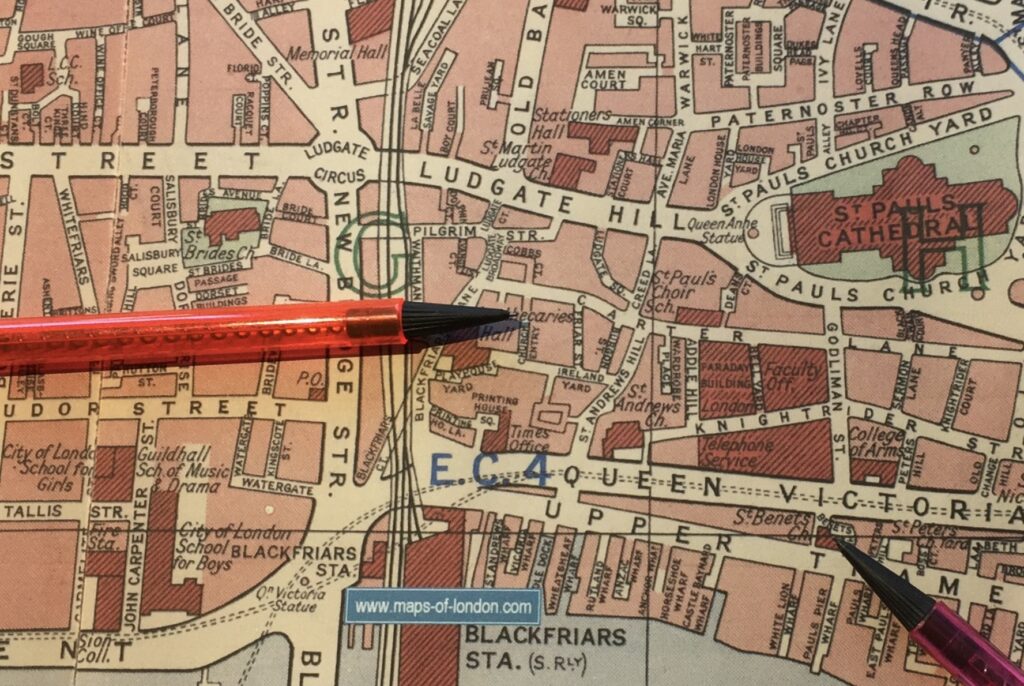
This is the present day site of Thomas Wright’s original burial place, now Peter’s Hill and the approach to the Millennium Bridge …
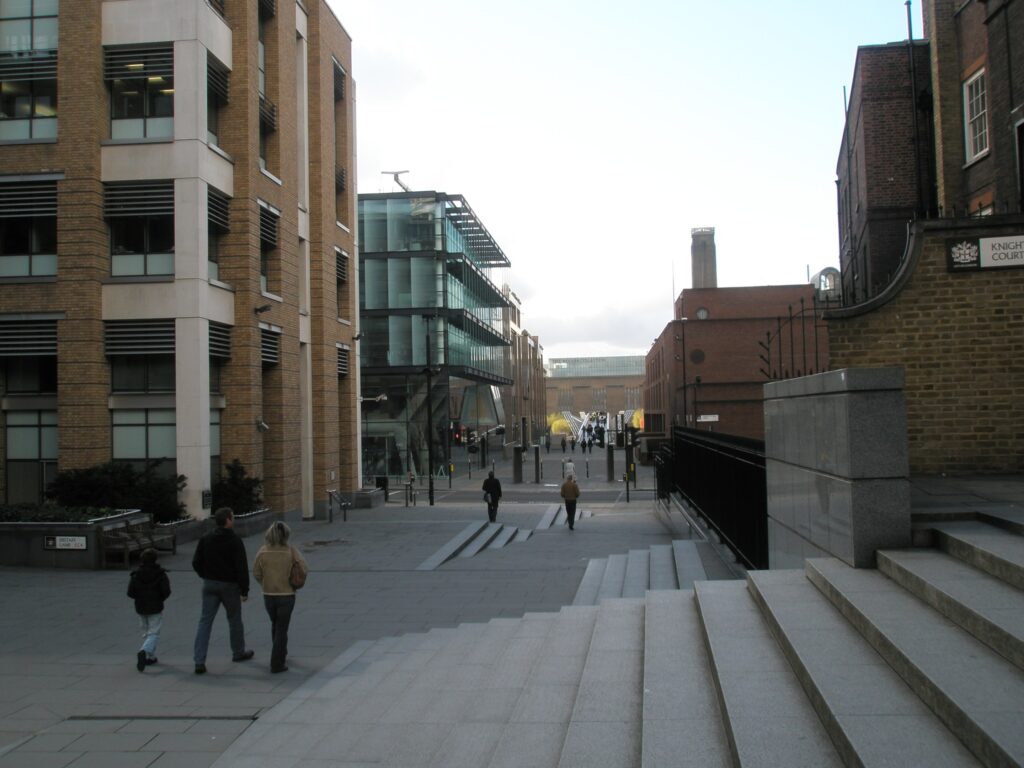
The stone must have been moved some time in the mid-20th century, but the question is, was Thomas moved as well? Have his bones finally come to rest in Church Entry? I have been unable to find out.
This is the headstone alongside Thomas’s …
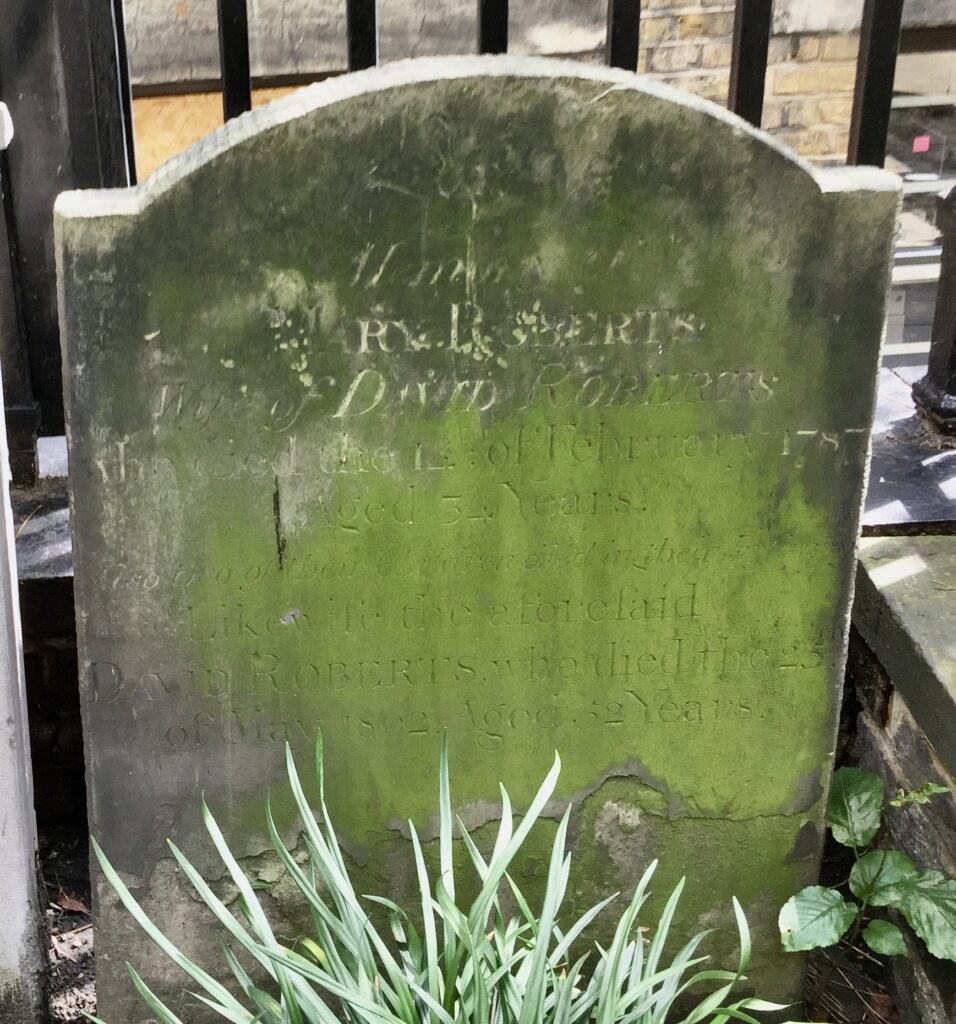
It reads as follows …
In Memory of MARY ROBERTS wife of David Roberts who died the 14th February 1787 aged 34 years. Also two of their children who died in their infancy … the aforesaid DAVID ROBERTS who died the 25th May 1802, aged 52 years.
The mystery surrounding this stone was that, although there are quite a few people called Roberts recorded in Percy’s memorial list, none of them are called Mary or David. So, assuming, the book is complete (and Percy was obviously very fastidious) I wondered where this marker came from.
As a result of the blog, I was contacted by Leah Earl who had been researching old parish records. She discovered that the burials of David and Mary Roberts are recorded in the burial registers for St Peter, Paul’s Wharf, so the grave marker ought to have been there when Percy was transcribing. Since Percy was so careful I can only imagine that he missed this stone either because it had fallen on its face or it had been hidden behind some stones that had been stacked up.
Here are the two pages from the records.
David Roberts is fourth from the bottom on this page …
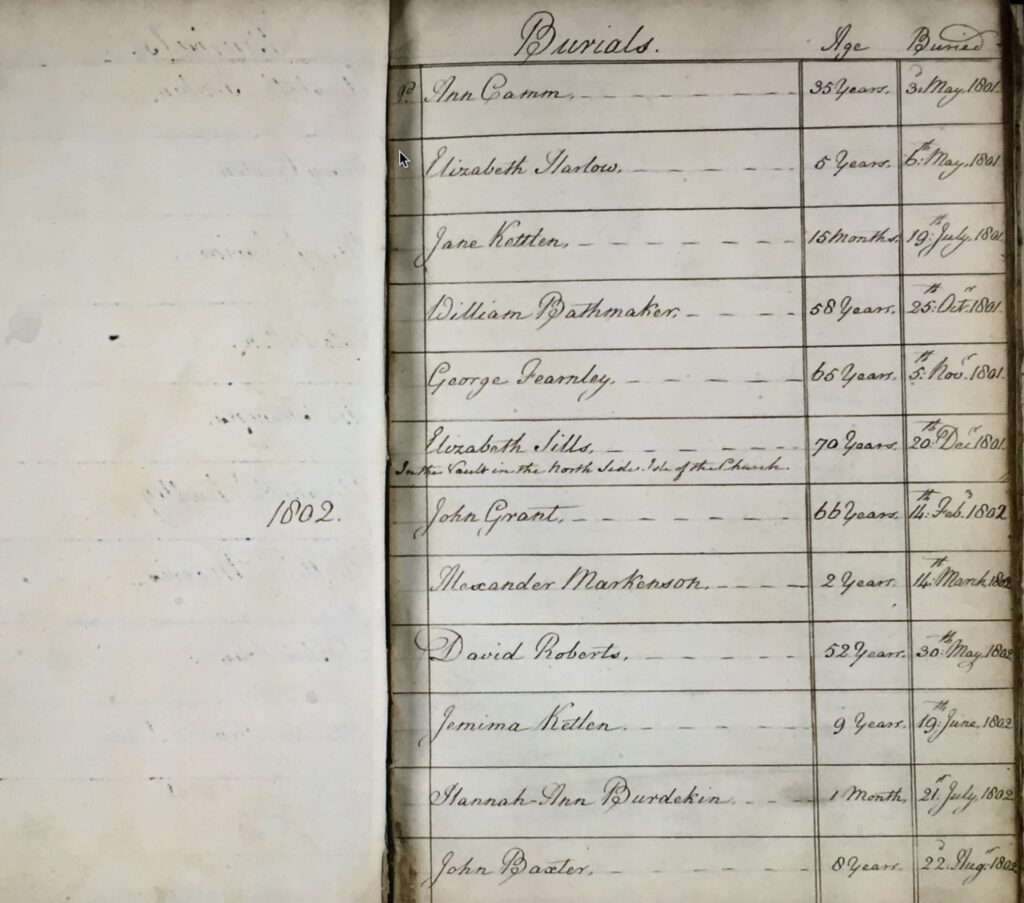
In this page you can see the tragic year of 1787 unfolding …
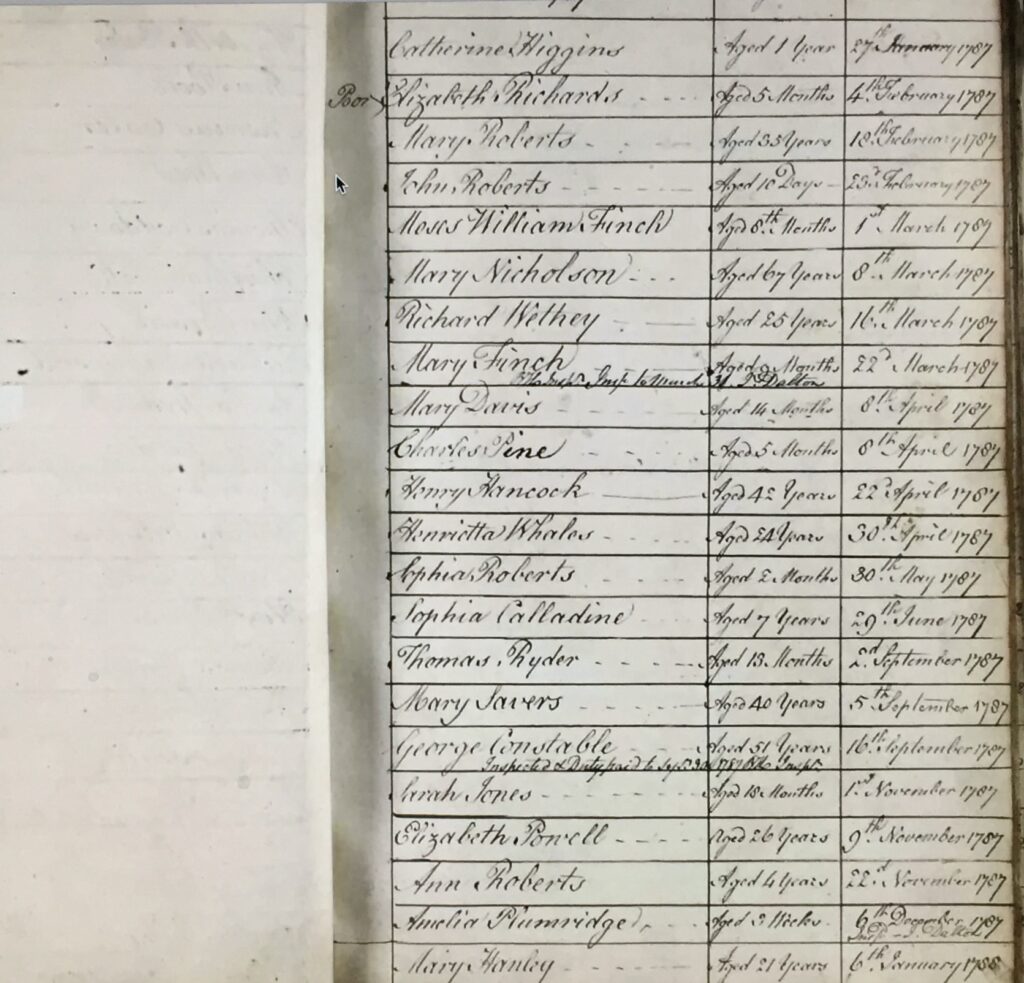
The record states that Mary, David’s wife, was buried on the 18th February and her newborn son, John, ten days later. Another child, Sophia, is buried three months after her mother on 30th May. These must be the two children of theirs who ‘died in infancy’. You’ll see that Mary’s age is given as 34 on the gravestone but 35 in the written record.
There is also a record of an Ann Roberts who died aged four on 22nd November 1787 but presumably she is not the child of David and Mary since she’s not mentioned on the marker.
About one in three children born in 1800 did not make it to their fifth birthday and maternal deaths at birth have been estimated at about five per thousand (although that is probably on the low side). Just by way of comparison, in 2016 to 2018, among the 2.2 million women who gave birth in the UK, 547 died during or up to a year after pregnancy from causes associated with their pregnancy. The 1800 equivalent rate would have meant 11,000 deaths.
If you are interested to know more about maternal mortality, its history and causes, you’ll find this incredibly informative article in The Journal of the Royal Society of Medicine. Most disturbing is how doctors who discovered the underlying cause of many deaths were disbelieved and vilified by the medical profession as a whole, thus allowing unnecessarily high mortality to continue for decades.
Now, on a more cheerful note, here are a few things that made me smile recently.
As I descended the stairs to Mansion House Station from Bow Lane I came across this little oasis of calm tucked away in a corner …




A couple of cars caught my eye …

And surely this car belongs to an old – school yuppie …

I wouldn’t argue with the sentiment above this door …
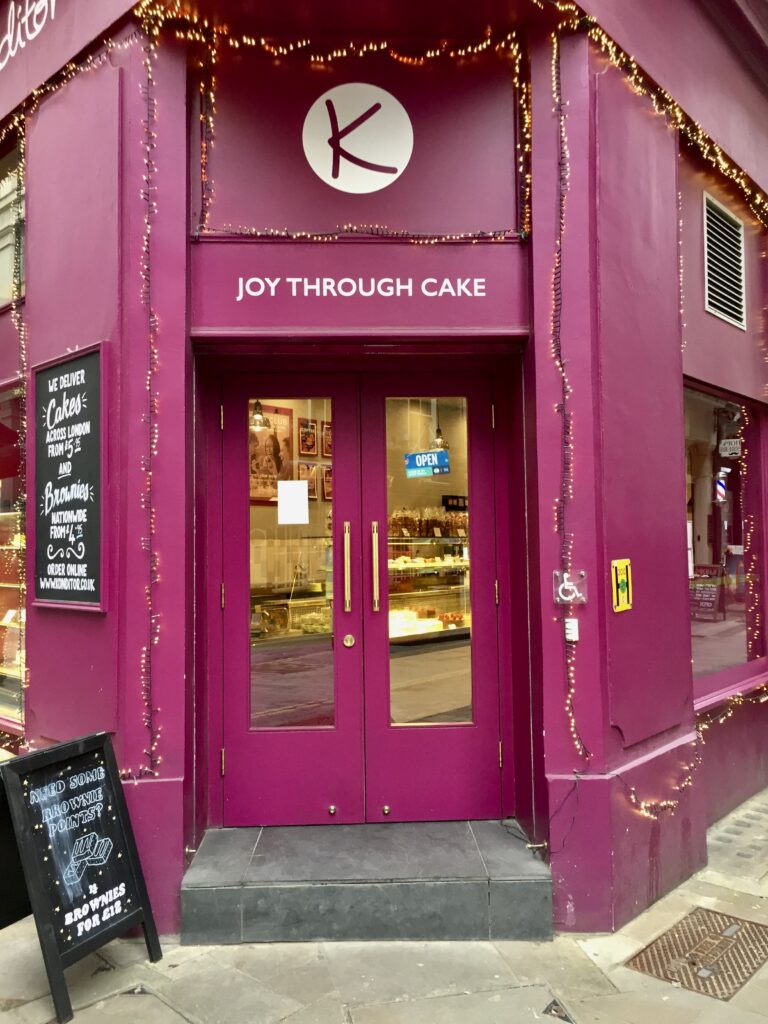
And finally, the City is being populated with some cheery new benches. These are in Aldermanbury …
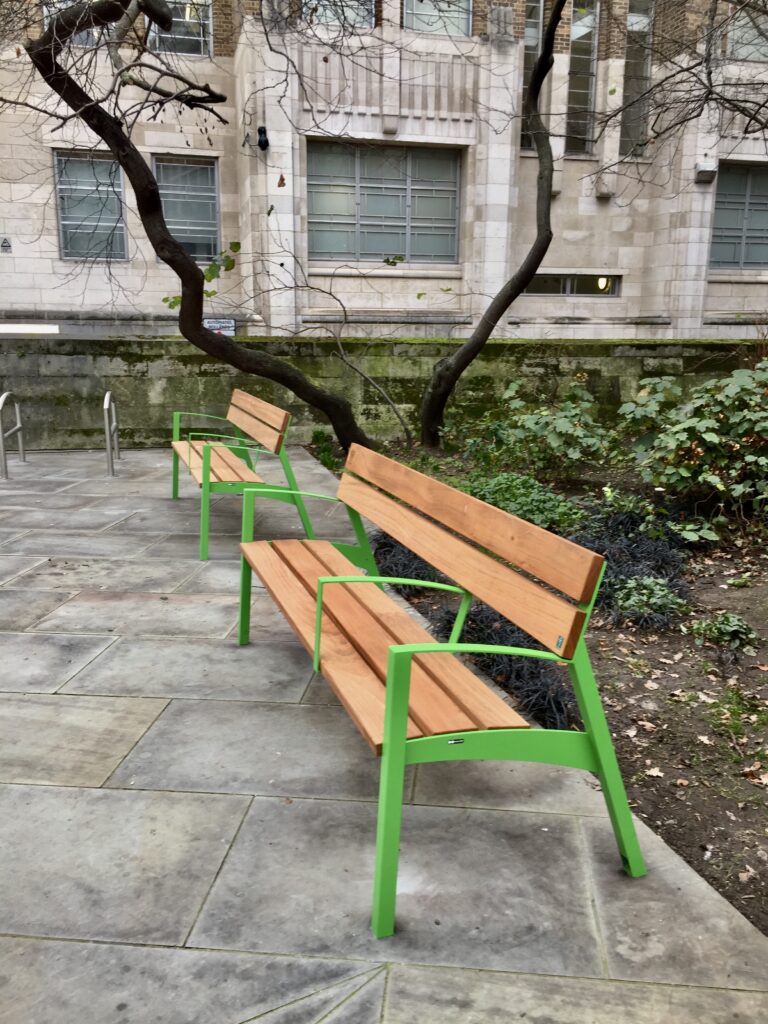
Incidentally, the tree in the background is Cercis siliquastrum. It is also known as the ‘Judas tree’. This comes from the legend that Judas Iscariot, full of shame after his betrayal of Jesus, hanged himself from one of its branches.
If you would like to follow me on Instagram here is the link …
